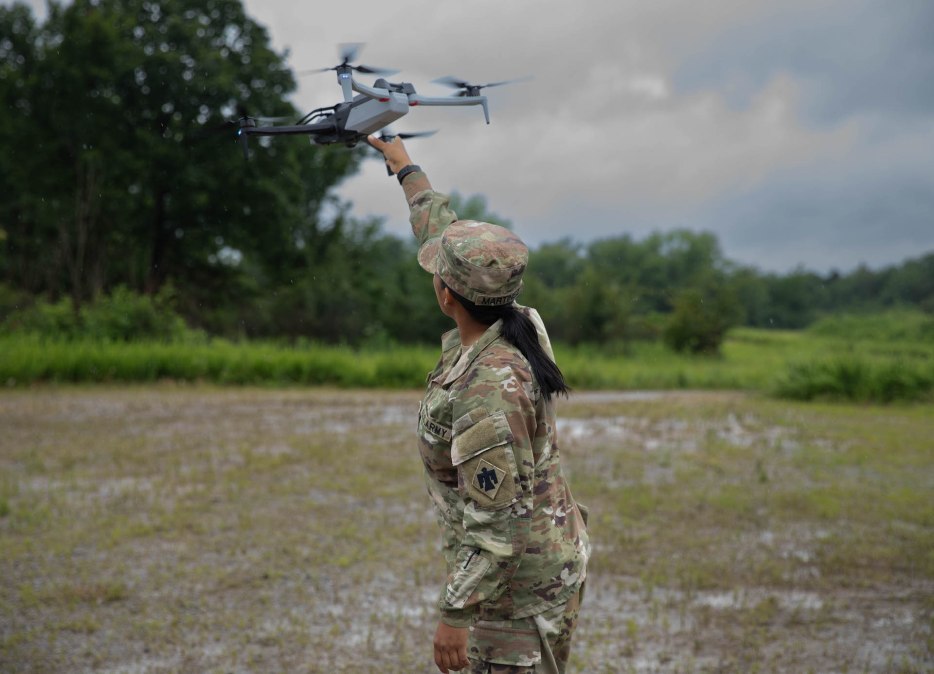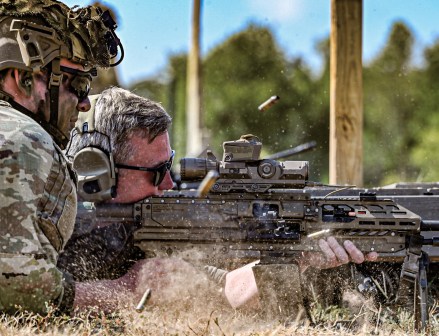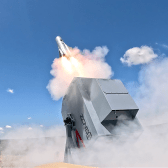Army poised to build drone marketplace for soldiers and units

The Army will be creating a marketplace to better match drones with units based on their requirements.
With so many vendors providing a variety of unmanned aerial systems, it can be difficult for formations to determine if certain systems will in fact meet their needs.
“There’s awesome items, awesome systems out there right now, but sometimes folks that sell, sell. The units call us as the UAS experts and say, ‘hey, what can this thing really do versus what may be a PowerPoint slide?’ That’s where we want to help the soldiers when they’re making these choices,” Col. Danielle Medaglia, project manager for UAS at program executive office for aviation, told reporters during a teleconference Thursday. “We will ensure it does what they actually advertise that it can do, and then what above and beyond what it may advertise and to include confirming NDAA compliance and confirm different things like ranges, endurance, payloads, capability, etc. Because right now, unfortunately, there’s just a lot of vendors in the space, which is great. But at the same time, it’s sometimes confusing soldiers based on the phone calls that we get. And we see our role as UAS experts to help those soldiers make those choices.”
The forthcoming marketplace is part of the drone revolution occurring within the Pentagon. Secretary of Defense Pete Hegseth issued a directive last month on “Unleashing U.S. Military Drone Dominance,” which sought to improve how the department develops and employs small UAS.
That directive calls for every squad to be equipped with low-cost, expendable drones by the end of 2026.
Army officials called the new marketplace and approach a “fundamental shift” in how traditional acquisition is conducted.
“What this is really doing is just changing, kind of a pivot from that traditional acquisition … [versus] running a competition, etc., to buying more of a variety, because technology just changes so fast in this space,” Ski Horrocks, deputy PM of UAS, said. “That’s really the key, is what we’re seeing is new capability is emerging all the time and we’re getting requests from soldiers, ‘hey, what do you know about this system? Can we buy this? Can we buy that?’ We really see that need to pivot.”
The goal is to get systems into the hands of troops as quickly as possible. Under the current acquisition paradigm, the PEO would get a requirement, run a competition with industry, select a few vendors, award systems and then field them to units. That process could take months to years in some cases.
Now, the PEO is taking more of a free market approach, officials said. The marketplace aims to create an open competition environment where vendors can present their systems to acquisition officials who will vet them under a tiered system and once validated and rated, post them for service members and units to choose from.
Officials stressed soldier feedback is a key part of the approach. Through the Army’s transforming-in-contact initiative, which aims to speed up how the service buys technologies and designs its forces by injecting emerging capabilities into units and letting them experiment with them during exercises and deployments, the service learned that units wanted more information on drone systems.
The PEO didn’t have all the data on the platforms that units asked for to meet their mission sets. Now, the goal is to be able to tell a unit what might be a good fit based on the tiered system of “bronze, silver and gold,” with gold being the highest level and capability.
Similarly, industry wants more feedback from units as well based on the performance of their systems and how they meet the mission. The marketplace, officials contend, is poised to accelerate that feedback loop and make it more direct.
PEO Aviation is hosting an industry day for the marketplace Sept. 16-18 in Huntsville, Alabama.
The initial goal is to start small, officials said, focusing on so-called launched effects and small drones.
“One of the key elements of this is our industry days in September is we are going to be asking for feedback from our industrial partners, from our vendors … and ensuring that we are incentivizing the right things,” Medaglia said. “That’s really important to us, so we don’t want to go through and say, O.K., everything is going to be put on this marketplace from day one. It’s more of a thoughtful and deliberate approach.”
Officials equated part of the marketplace to an Amazon-like store front, with a simple interface users can access and filter based on different UAS groups, range, speed and cost, among other characteristics.
“We’ll advertise, but we’ll do our due diligence to, over time … and that’s where we see that tiering process come into play is, ‘hey, you say you can go 60 kilometers with two hours of endurance, but can you actually?’” Horrocks said. “We owe that to soldiers, and that’s really what soldiers aren’t getting today … if they’re just talking to industry. We want to make sure that we’re providing that one-stop shop for providing that confidence that the system does exactly as it’s advertised.”
The PEO hopes to launch a minimum viable product for the storefront in early October.
Officials also envision payload vendors teaming up with other partners to provide their payloads to the marketplace to be paired with particular drones for modular, complete systems.
“We see it as both a solution space, the storefront itself for traditional buyers, like us, a PEO, but also for soldiers, and then also for vendors to work amongst themselves and team in that environment,” Horrocks said.






